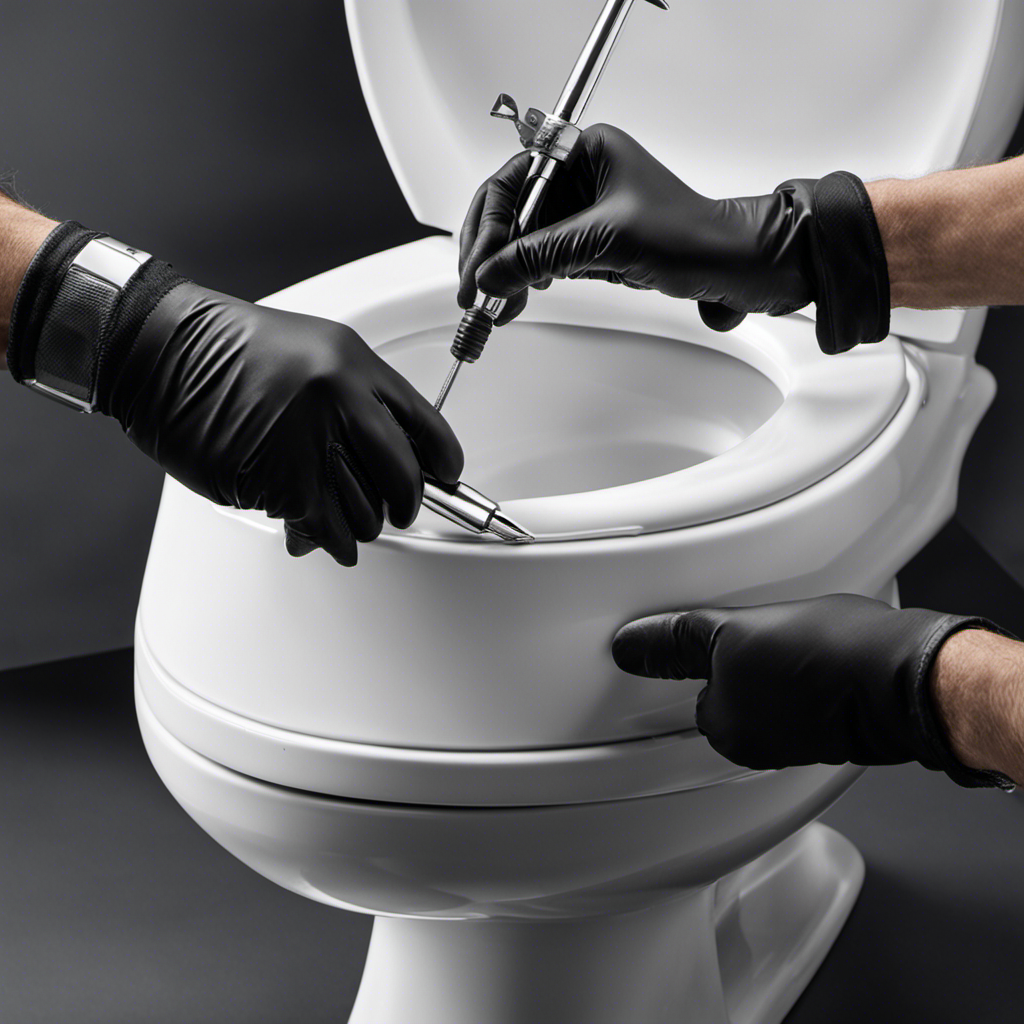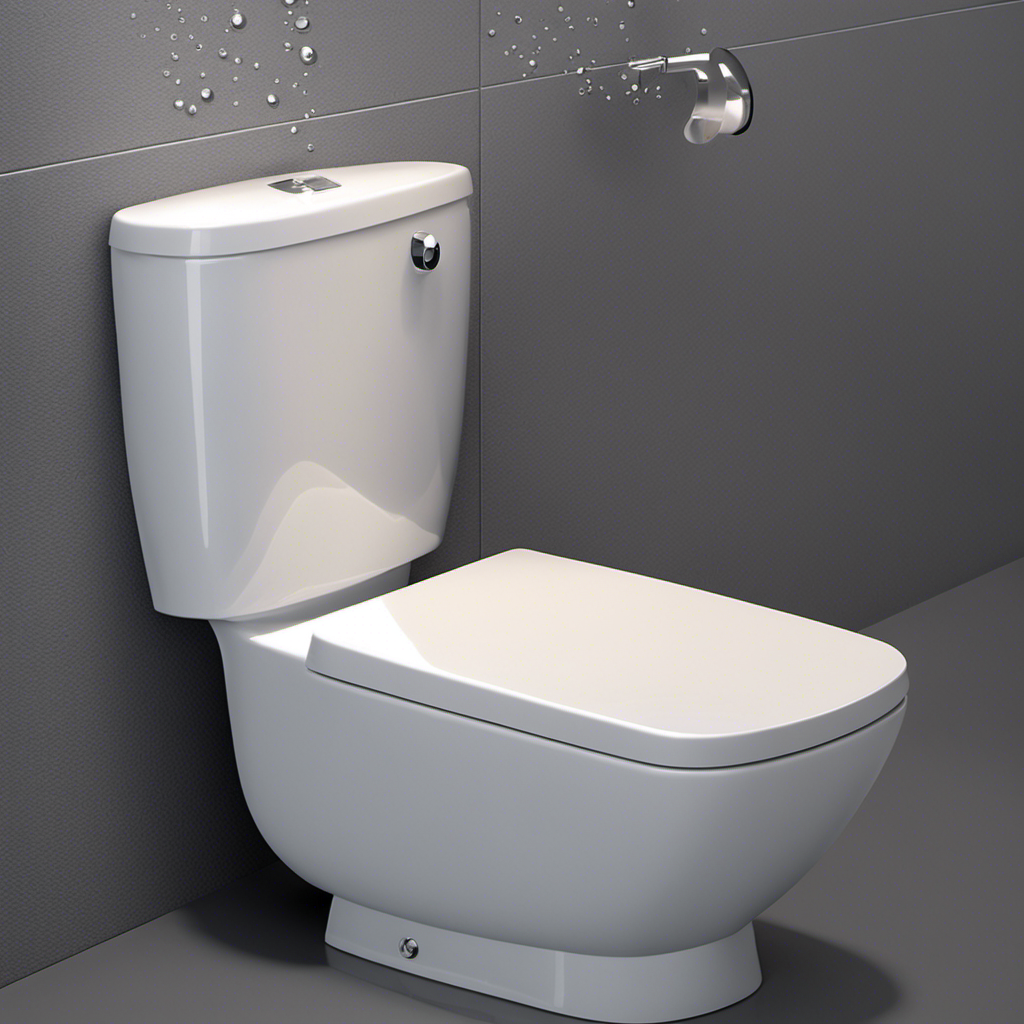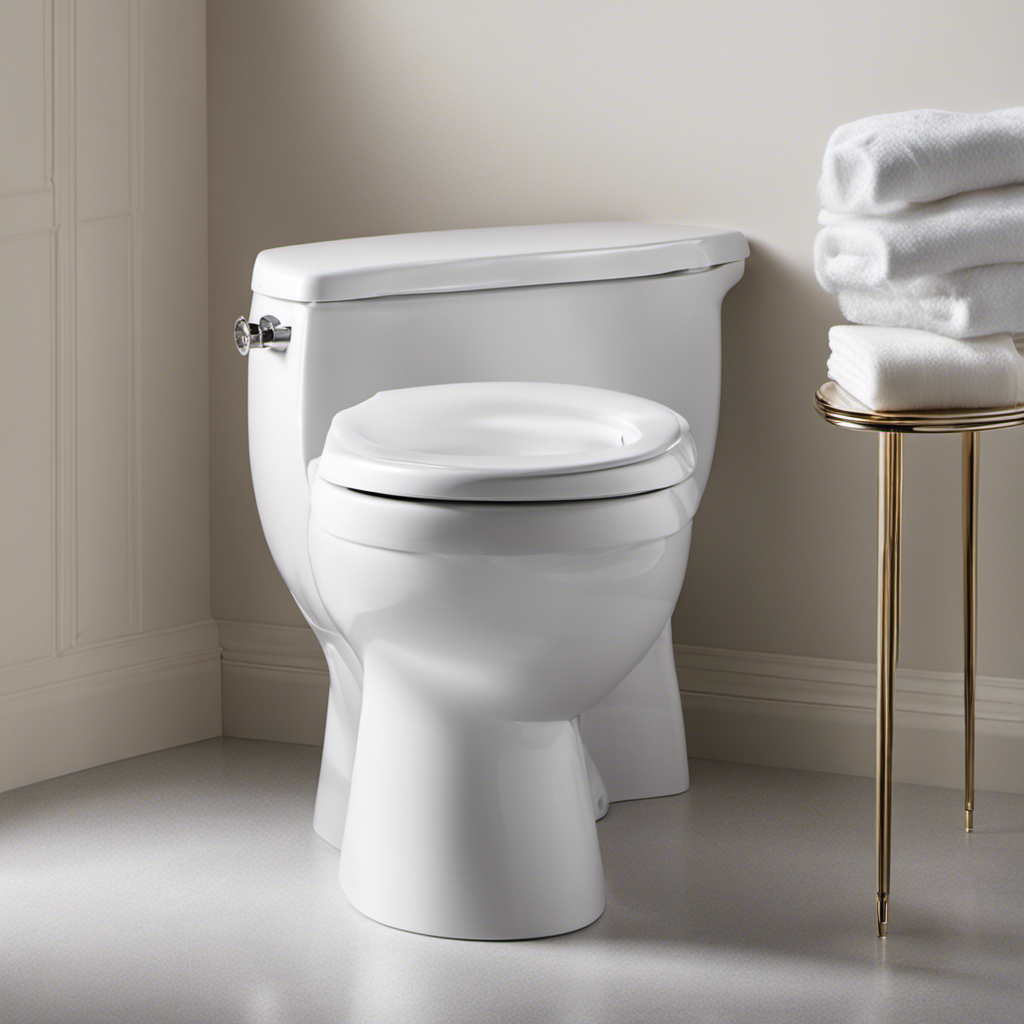Hey there!
Have you ever experienced the frustration of a toilet leaking when flushed? Well, I’ve been there too, and let me tell you, it’s not a pleasant situation.
But worry not, because in this article, I’m going to share some common causes of these leaks, help you identify the source, and provide DIY fixes.
And if things get too tricky, I’ll let you know when it’s time to call in a professional plumber.
So, let’s dive in and put an end to those pesky toilet leaks!
Key Takeaways
- Faulty flapper valve is a common cause of toilet leaks when flushed.
- Prompt addressing of leaks is important to conserve water and prevent damage.
- DIY fixes for toilet leaks include tightening tank bolts and replacing the flush valve if necessary.
- When experiencing water pooling around the base of the toilet or continuous running after flushing, it is advisable to call a professional plumber.
Common Causes of Toilet Leaks When Flushed
One common cause of toilet leaks when you flush is a faulty flapper valve. The flapper valve is a crucial component of the toilet’s flushing mechanism. It is responsible for controlling the flow of water from the tank into the bowl. If the flapper valve is not functioning properly, it can lead to water leakage when you flush.
To detect a toilet leak, there are a few signs to look out for. Firstly, if you notice water pooling around the base of the toilet or a constant sound of running water, it may indicate a hidden toilet leak. Another sign is a sudden increase in your water bill without any other explanation.
It is important to address toilet leaks promptly to conserve water and prevent further damage.
Identifying the Source of the Leak
When identifying the source of a leak, it’s important to check all the connections and seals. This will help you troubleshoot toilet leaks effectively and take the necessary steps to stop them.
Here are three important things to consider when trying to identify the source of a toilet leak:
-
Inspect the water supply line: Check for any cracks or loose connections in the water supply line that connects the toilet tank to the water source. If you notice any issues, tighten the connections or replace the line if necessary.
-
Examine the wax ring: The wax ring seals the toilet to the floor and prevents leaks. Inspect the wax ring for any signs of damage or deterioration. If you find any issues, you’ll need to replace the wax ring to stop the leak.
-
Check the tank bolts and flush valve: Inspect the tank bolts and flush valve for any signs of corrosion, looseness, or damage. If needed, tighten the bolts or replace the flush valve to fix the leak.
DIY Fixes for Toilet Leaks When Flushed
To fix toilet leaks that occur when flushing, you can try tightening the tank bolts or replacing the flush valve. Toilet leak repair can be a simple DIY project if you follow these troubleshooting steps.
Start by checking the tank bolts located on the bottom of the tank. Use a wrench to tighten them, ensuring they are snug but not overtightened.
If the leak persists, the flush valve may be the culprit. Turn off the water supply to the toilet and flush to drain the tank. Remove the old flush valve by unscrewing it from the bottom of the tank and install a new one following the manufacturer’s instructions.
Once the new valve is in place, turn the water supply back on and test the toilet for leaks. These simple fixes can save you money on plumbing repairs and keep your toilet functioning properly.
When to Call a Professional Plumber
If you’re experiencing persistent plumbing issues, it may be time to call a professional plumber. While some toilet leaks can be easily fixed with DIY solutions, there are certain signs that indicate a serious toilet leak that requires professional attention. Here are three signs that you should look out for:
-
Pooling Water: If you notice water pooling around the base of your toilet every time you flush, it could be a sign of a serious leak. This could indicate a problem with the wax ring or the toilet flange.
-
Constant Running: If your toilet continues to run even after flushing, it could be a sign of a leak in the tank or the flush valve. This can lead to wasted water and higher utility bills.
-
Foul Odors: If you detect a foul odor coming from your bathroom, it could be due to a hidden toilet leak. This can lead to mold and mildew growth, which can be harmful to your health.
When it comes to hiring a reliable plumber, make sure to do your research, read reviews, and ask for references. A professional plumber will have the necessary expertise and tools to accurately diagnose and fix your toilet leak, ensuring a long-lasting solution.
Preventing Future Toilet Leaks When Flushed
Regular maintenance and inspections by a professional plumber can help prevent future leaks when you flush. To ensure your toilet remains leak-free, here are some maintenance tips to follow.
First, regularly check the water supply line and connections for any signs of wear or damage. If you notice any leaks or cracks, replace the supply line immediately.
Next, inspect the flush valve and flapper for any signs of deterioration or buildup. Clean or replace them as necessary to maintain a proper seal.
Additionally, make sure the tank bolts and washers are secure and tight. Loose bolts can cause leaks when you flush.
Lastly, avoid using harsh chemicals in your toilet, as they can degrade the seals and cause leaks.
Conclusion
In conclusion, toilet leaks when flushed can be caused by various factors. These include a faulty flapper, a worn-out fill valve, or loose connections.
By identifying the source of the leak and using DIY fixes like adjusting the flapper or replacing the fill valve, you can often resolve the issue yourself. However, if the problem persists or you’re unsure of how to proceed, it’s best to call a professional plumber.
Remember, prevention is key. Regularly inspect and maintain your toilet to avoid future leaks.










